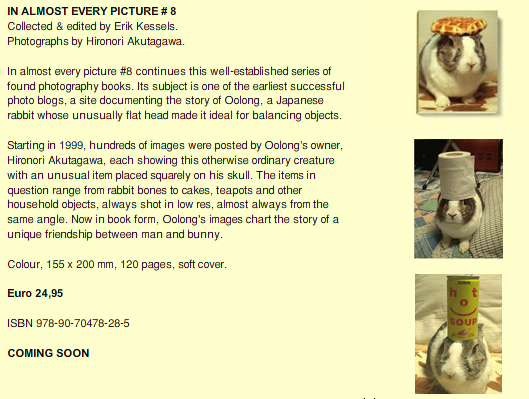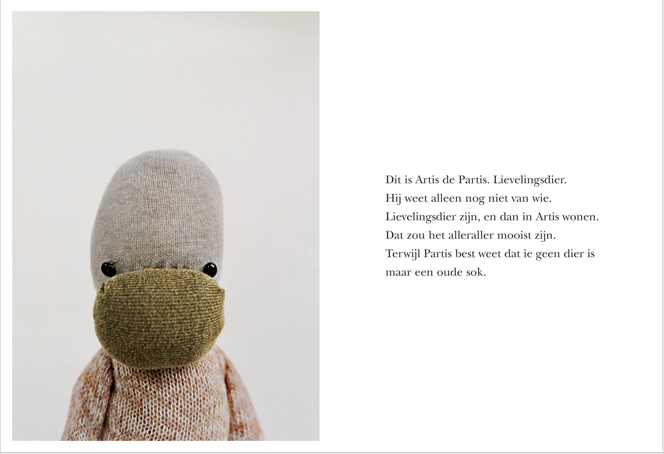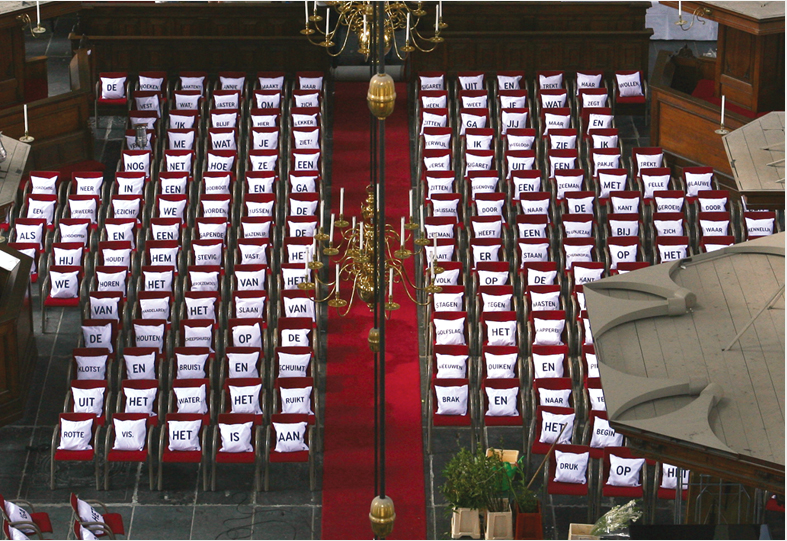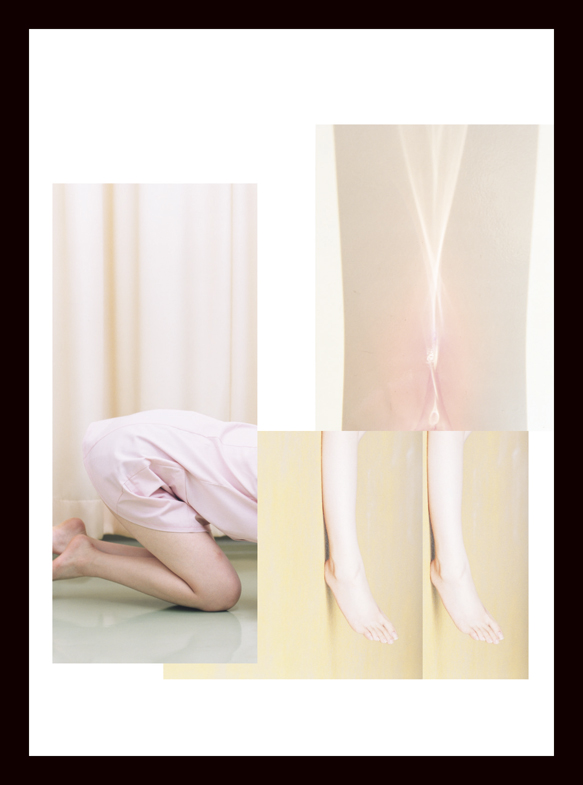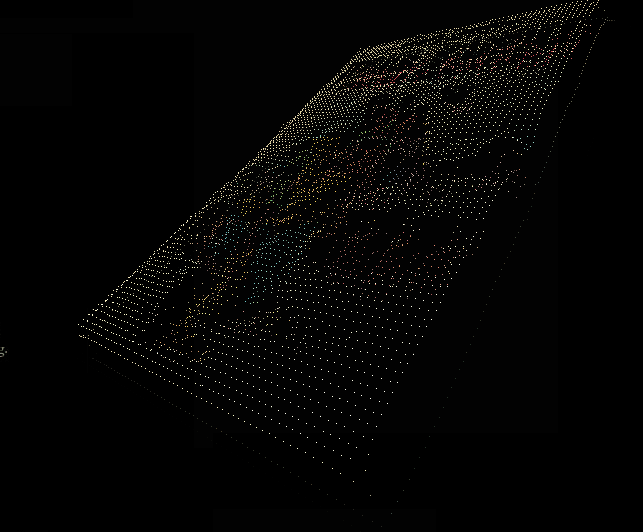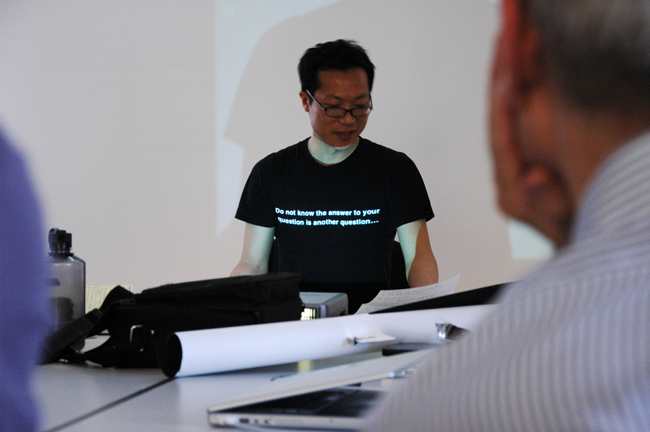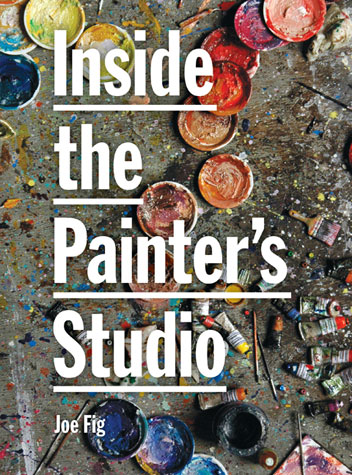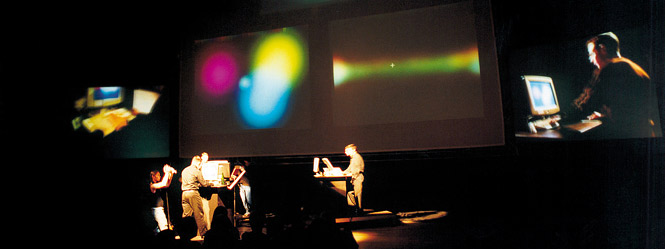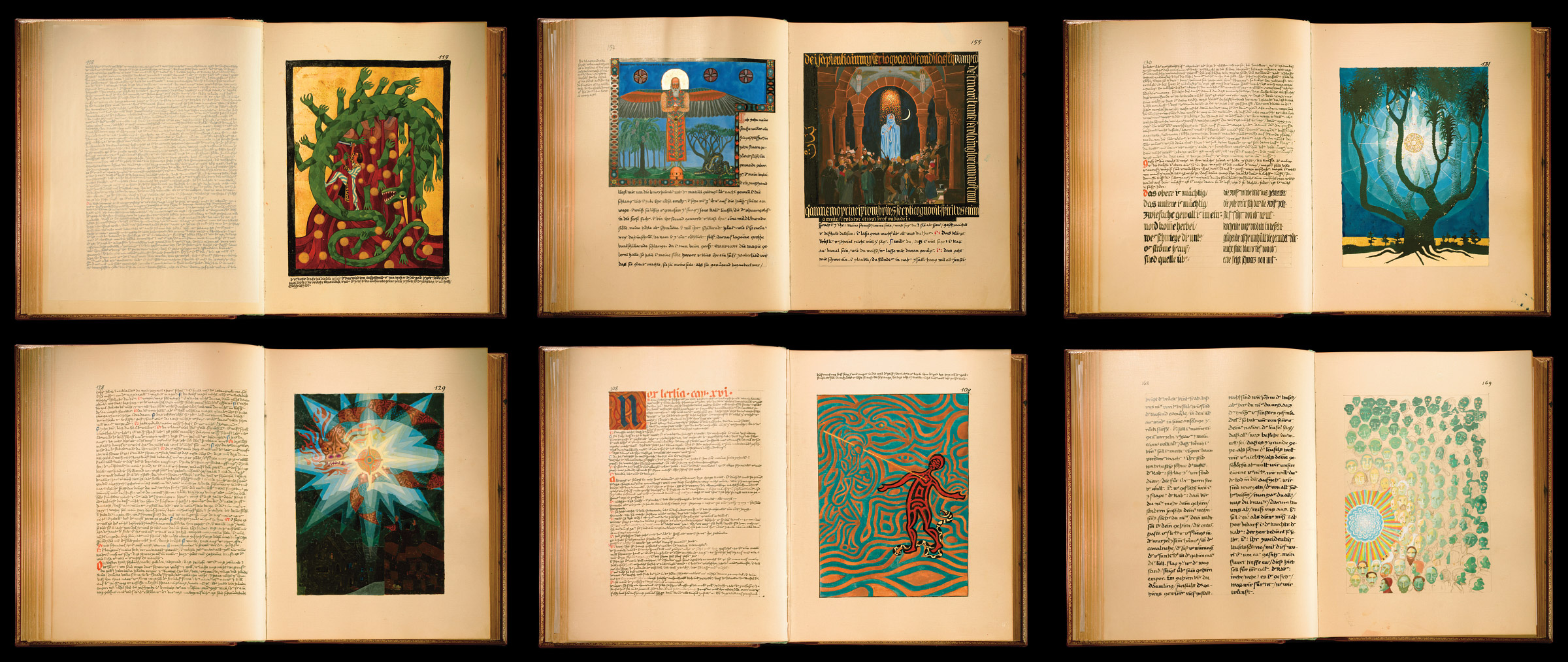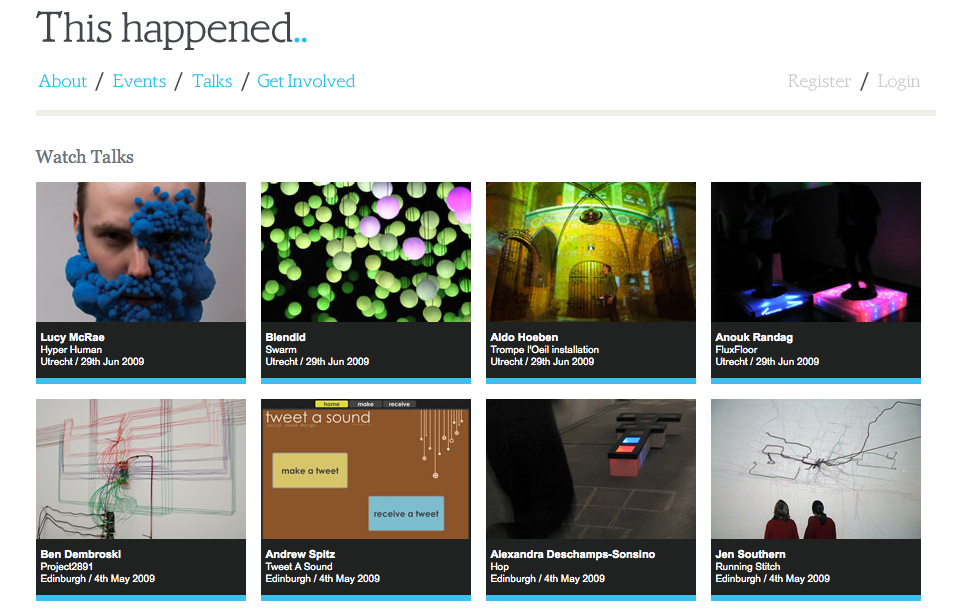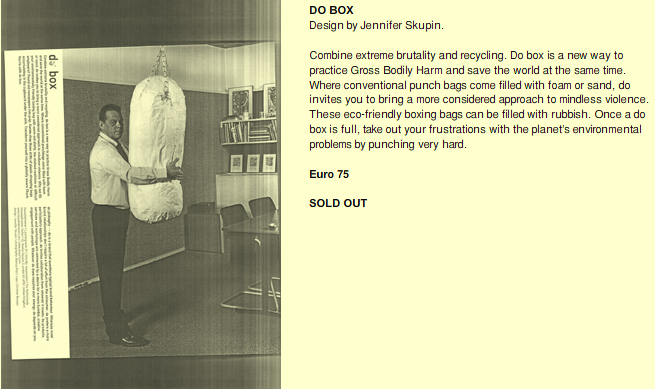
Kesselkramer Publishing: In Almost Every Picture #8
Christian Borstlap
sorry for re-posting this from QBN, but there’s alot of good work here.
Who said commercial work can’t be interesting?
Dignity and Beauty
I am interested in the mechanism of human perception. For example, the color red is described as a single word red, but the color red pictured by each of us is different. They are the same yet different. Or they are different but same. This is the perceptual gap hidden in a conceptualized or iconized notion.I believe that modern society emphasizes the value of “shared notion” too much. This is summarized as “easy to understand”Ironically, “understand” means ”do not understand”. Socrates said his wisdom was limited to an awareness of his own ignorance…Modern society is similar to vegetables raised in a green house. They are artificial thus unnatural. Mother Nature can adapt to an unexpected environmental change by diversifying herself. People living in a modern society which eliminates diversity can be described as people raised in a green house. People learn less from homogenized information, so that quality of output will result in mediocrity. As a result, the whole society becomes simplified; people do not realize how many different reds exist. This society eliminates alien elements. A straightforward example is the manner in which people easily loose their temper.What I would like to express is the gap, blank space or atmosphere between classified notions. By combining, displacing and installing stacks of generalized human body shapes and some meaningful objects within a three dimension space, viewers perceive something hidden between their consciousnesses. It is important to know what we do not know, but we should also realize that we do not know what we used to know.
http://www1.moshi-moshi.jp/content/2008090316023619127.entry/html/portfolio
——-
p.s: check out their other work too
Color Tokyo!
Color Tokyo! from Semitra on Vimeo.
Post-Digital
Screens are getting boring. It’s really hard to impress anyone with stuff on a screen any more. However clever you’ve been. However much thought you’ve put in. However good the tech is. No-one’s impressed. They’ve all seen better stuff in ads and movies anyway - when will onscreen stuff be as good as that? Whereas doing stuff in the real world still seems to delight and impress people. Really simple stuff with objects looks like magic. Really hard stuff with screens still just looks like media.
http://russelldavies.typepad.com/planning/2009/01/meet-the-new-schtick.html
Things Our Friends Have Written On The Internet
Concave Scream - Soundtrack for a book
Editors: Google Street View Hack
Preview Editors’ new album and some original band pics in this hacked version of Google Street View.
Google Street View becomes a vehicle for promoting Editors’ new album, In This Light and On This Evening, in Sony’s hacked version of the application. Visitors can preview the album’s tunes on the Street View map and see a panaromic photo of the band at the various locations that inspired the songs.
Burger King Windows 7 Whopper
Windows 7 hits retailers around the world today but that hasn’t stopped Burger King getting in on the marketing fun.

Between Virtual and Physical
Visiting designer workshop with LUST to explore the area where the virtual and physical merge and new things happen. Inspired by the foreign films subtitles, Korean dialogues were translated by GOOGLE translate tool in real time, allowing virtual tool to be recognized in the real-world.
Little
re: Japan: Robot Nation
“When Saya displays a very angry face, small children start crying. They seem to feel a sense of authority from Saya, like she’s somewhere between being God and human.”

LOL WTF, I would cry too, that robot is ugly as hell.
Japan: Robot Nation
Japan, the world’s second largest economy, is facing a demographic crisis that will shrink the population dramatically. The Japanese aren’t having babies, and the country won’t accept immigrants to help bolster the population. But Japan may have a unique solution — Robots!
Inside the Painter’s Studio
Inside an art gallery, it is easy to forget that the paintings there are the end products of a process involving not only creative inspiration, but also plenty of physical and logistical details. It is these “cruder,” more mundane aspects of a painter’s daily routine that motivated Brooklyn artist Joe Fig to embark almost ten years ago on a highly unorthodox, multilayered exploration of the working life of the professional artist. Determined to ground his research in the physical world, Fig began constructing a series of diorama-like miniature reproductions of the studios of modern art’s most legendary painters, such as Jackson Pollock and Willem de Kooning. A desire for firsthand references led Fig to approach contemporary artists for access to their studios. Armed with a camera and a self-made “Artist’s Questionnaire,” Fig began a journey through the workspaces of some of today’s most exciting contemporary artists.
Inside the Painter’s Studio collects twenty-four remarkable artist interviews, as well as exclusive visual documentation of their studios. Featured artists were asked a wide range of questions about their day-to-day creative life, covering everything from how they organize their studios to what painting tools they prefer. Artists open up about how they set a creative mood, how they choose titles, and even whether they sit or stand to contemplate their work. Also included are a selection of Fig’s meticulously detailed miniatures. In this context Fig’s diminutive sculptures—reproducing minutiae of the studio, from paint-tube labels and paint splatters on the floor to the surface texture of canvases—become part of a fascinating new form of portraiture as diorama. Inside the Painter’s Studio offers a rare look into the self-made universe of the artist’s studio. Inside the Painter’s Studio features interviews with Gregory Amenoff, Ross Bleckner, Chuck Close, Will Cotton, Inka Essenhigh, Eric Fischl, Barnaby Furnas, April Gornik, Jane Hammond, Mary Heilmann, Bill Jensen, Ryan McGinness, Julie Mehretu, Malcolm Morley, Steve Mumford, Philip Pearlstein, Matthew Ritchie, Alexis Rockman, Dana Schutz, James Siena, Amy Sillman, Joan Snyder, Billy Sullivan, and Fred Tomaselli.
Joe Fig is an artist born and raised in Long Island, New York.ÊFig’s work has been exhibited extensively throughout the United States. He lives in Connecticut with his wife and two children.
http://www.papress.com/html/book.details.page.tpl?cart=12540443109595&isbn=9781568988528
Lucy McRae talks about Hyper Human
Independent designer Lucy McRae lives and works in Amsterdam, where she explores the overlapping areas of fashion, technology and the human body; the latter being an enduring fascination caused by her education as a classical ballerina. She works alone, and as part of the Lucy and Bart collective. Lucy will talk about her recent research into low-tech ways of shape the human silhouette, titled Hyper Human.
China’s 60th Anniversary national day - timelapse and slow motion - 7D and 5DmkII
China’s 60th Anniversary national day - timelapse and slow motion - 7D and 5DmkII from Dan Chung on Vimeo.
Flong
This is the web site of Golan Levin, an artist and educator
living in Pittsburgh. I teach at Carnegie Mellon University,
where I also direct the Studio for Creative Inquiry.
I create interactive artifacts and experiences with a variety
of collaborators. I also publish writings, and I keep a blog.
I use FriendFeed to compile my image, video and text feeds.
Feel free to contact me, or join my low-traffic mailing list.
Dialtones: A Telesymphony
Dialtones (A Telesymphony) (2001-2002: Golan Levin, Gregory Shakar, Scott Gibbons, Yasmin Sohrawardy, Joris Gruber, Erich Semlak, Gunther Schmidl, Joerg Lehner, and Jonathan Feinberg) is a large-scale concert performance whose sounds are wholly produced through the carefully choreographed ringing of the audience’s own mobile phones. Before the concert, participants register their mobile phone numbers at a series of web terminals; in exchange, new ringtone melodies are automatically transmitted to their phones, and their seating assignment tickets are generated. During the concert, the audience’s phones are dialed up by live performers, using custom software which permits as many as 60 phones to ring simultaneously. Because the exact location and tone of each participant’s mobile phone is known in advance, the Dialtones concert is able to present a diverse range of unprecedented sonic phenomena and musically interesting structures, such as waves of polyphony which cascade across the audience. Dialtones was presented at the Ars Electronica Festival in September 2001, and at the Swiss National Exposition in May and June of 2002.
Barbarella (1968)
Movies used to be so awesome.
Nujabes - Love Sic part 2
The Holy Grail of the Unconscious
This is a story about a nearly 100-year-old book, bound in red leather, which has spent the last quarter century secreted away in a bank vault in Switzerland. The book is big and heavy and its spine is etched with gold letters that say “Liber Novus,” which is Latin for “New Book.” Its pages are made from thick cream-colored parchment and filled with paintings of otherworldly creatures and handwritten dialogues with gods and devils. If you didn’t know the book’s vintage, you might confuse it for a lost medieval tome.
Of those who did see it, at least one person, an educated Englishwoman who was allowed to read some of the book in the 1920s, thought it held infinite wisdom — “There are people in my country who would read it from cover to cover without stopping to breathe scarcely,” she wrote — while another, a well-known literary type who glimpsed it shortly after, deemed it both fascinating and worrisome, concluding that it was the work of a psychotic.
What happened next to Carl Jung has become, among Jungians and other scholars, the topic of enduring legend and controversy. It has been characterized variously as a creative illness, a descent into the underworld, a bout with insanity, a narcissistic self-deification, a transcendence, a midlife breakdown and an inner disturbance mirroring the upheaval of World War I. Whatever the case, in 1913, Jung, who was then 38, got lost in the soup of his own psyche. He was haunted by troubling visions and heard inner voices. Grappling with the horror of some of what he saw, he worried in moments that he was, in his own words, “menaced by a psychosis” or “doing a schizophrenia.”
Jung recorded it all. First taking notes in a series of small, black journals, he then expounded upon and analyzed his fantasies, writing in a regal, prophetic tone in the big red-leather book. The book detailed an unabashedly psychedelic voyage through his own mind, a vaguely Homeric progression of encounters with strange people taking place in a curious, shifting dreamscape. Writing in German, he filled 205 oversize pages with elaborate calligraphy and with richly hued, staggeringly detailed paintings.
http://www.nytimes.com/2009/09/20/magazine/20jung-t.html?_r=1&pagewanted=1&em
This happened….
This happened is a series of events focusing on the stories behind interaction design. Having ideas is easier than making them happen. We delve into projects that exist today, how their concepts and production process can help inform future work.
Interaction design companies are often too closed off to the outside. We want to encourage people to be more open in their methods and ideas. We aim to have a mix of established practitioners, commercial companies and students. We want to encourage the perspectives from the other side of the fence, so will also be inviting curators and commissioners of work to give presentations.
The Fun Theory
This site is dedicated to the thought that something as simple as fun is the easiest way to change people’s behaviour for the better. Be it for yourself, for the environment, or something entirely different, the only thing that matters is that it’s change for the better.
Piano Staircase
”Take the stairs instead of the escalator or elevator and feel better” is something we often hear or read in the Sunday papers. Few people actually follow that advice. Can we get more people to take the stairs over the escalator by making it fun to do? See the results here.
World’s Deepest Bin
To throw rubbish in the bin instead of onto the floor shouldn’t really be so hard. Many people still fail to do so. Can we get more people to throw rubbish into the bin, rather than onto the ground, by making it fun to do? See the results here.
Copyright © _dreams. All rights reserved.

